Understanding Coin Premiums: What You Pay Beyond the Metal's Value
When investing in bullion coins, the value isn’t just about the price of gold, silver, or other precious metals. Every buyer must consider an additional cost, called a premium, influenced by the gold price. But what exactly is this premium,...
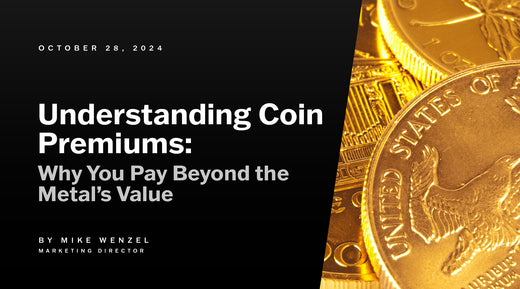

When investing in bullion coins, the value isn’t just about the price of gold, silver, or other precious metals. Every buyer must consider an additional cost, called a premium, influenced by the gold price. But what exactly is this premium, why does it exist, and how can savvy investors navigate it to make the best possible investment decisions?
In this post, we’ll look into coin premiums—what they are, why they fluctuate, and how you can factor them into your purchasing strategy to ensure you get the best value for your investment.
What Is a Coin Premium?
A coin premium is the amount you pay over and above the spot price of the metal in the coin. For example, if the spot price of gold is $1,800 per ounce and you’re purchasing a one-ounce gold bullion coin, you might pay $1,850 for that coin. The $50 difference is the premium.
Premiums are typical across all bullion coins, whether made from gold, silver, platinum, or other precious metals and are influenced by their market value. Depending on market conditions, these premiums vary from coin to coin, dealer to dealer, and even daily.
Factors Influencing Coin Premiums
Various factors beyond the intrinsic value of the precious metal influence coin premiums. One of the primary drivers is market demand. When gold and silver coins demand surges, premiums tend to rise accordingly. Conversely, premiums can decrease during periods of low demand, making it a more favorable time for investors to buy.
The rarity and historical significance of a coin also play a crucial role. Collectors and investors are often willing to pay a higher premium for coins that are unique or have a rich history. For instance, a rare coin from a limited minting run or one with historical importance can command a significantly higher premium than a standard bullion coin.
Other critical factors are a coin's condition and quality. Coins in pristine condition, often graded by professional services, can fetch higher premiums. A coin graded as MS70, indicating a perfect state, will typically have a higher premium than one with visible wear and tear.
Additionally, the reputation and reliability of the mint or manufacturer can influence premiums. Coins produced by well-known and trusted mints, such as the U.S. Mint or the Royal Canadian Mint, often carry higher premiums due to their guaranteed quality and authenticity.
Lastly, market conditions such as economic stability, inflation rates, and geopolitical events can impact coin premiums. During economic uncertainty, the demand for safe-haven assets like gold and silver increases, driving premiums.
Coin Characteristics and Premiums
The characteristics of a coin significantly impact its premium. One of the most noticeable factors is the weight and purity of the coin. Coins with higher purity levels, such as 24-karat gold or 99.9% silver, often command higher premiums due to their higher metal content.
The design and aesthetic appeal of a coin can also influence its premium. Coins with unique or intricate designs are often more desirable to collectors, leading to higher premiums. For example, commemorative coins or those with special editions frequently have higher premiums due to their limited availability and artistic value.
Other important factors are a coin's size and weight. Larger and heavier coins generally have higher premiums because they contain more precious metal. However, the production costs associated with minting larger coins can also contribute to the higher premium.
The minting process and production costs are crucial in determining premiums. Coins that are more difficult or expensive to produce, such as those with special finishes or intricate designs, will naturally have higher premiums. The cost of ensuring the coin’s purity and authenticity is also factored into the premium.
Understanding Premium Over Spot
The term premium over spot refers to the difference between a coin's market price and its melt value or the value of the metal it contains. This premium can vary widely depending on several factors, including the coin type, rarity, and market demand.
Understanding the premium over the spot is essential for investors and collectors. It helps them make informed decisions about their purchases and ensures they get a fair deal. For instance, a coin with a high premium over the spot might be a good investment if it is rare or in high demand.
Market conditions also significantly influence the premium over the spot. Premiums can rise significantly during times of high demand, such as economic uncertainty or market volatility. Conversely, premiums may decrease during periods of low demand, offering better buying opportunities.
Investors should always research and understand the premium over spot before purchasing. This knowledge can help them identify coins that offer the best value and avoid overpaying for their investments.
Why Are Silver Coin Premiums Added to Bullion Coins?
Several factors contribute to the premiums added to the spot price of bullion coins. Understanding these can help gauge whether you’re getting a fair deal.
-
Minting and Production Costs
Bullion coins aren’t just raw metal; they undergo a refining and minting process that transforms the raw metal into a standardized product. The cost of striking, packaging, and ensuring the coin’s purity and authenticity is passed on to the buyer as a premium. Coins produced by reputable mints like the U.S. Mint or Royal Canadian Mint often carry higher premiums because of their trusted quality and production standards. -
Dealer Markups
Dealers add their margin to cover business expenses, from sourcing the coins to providing customer service. This markup can vary between dealers, so it’s always worth comparing prices from multiple sources before purchasing. -
Supply and Demand
Premiums can fluctuate based on market dynamics. When demand for precious metals spikes during economic uncertainty, premiums can increase significantly. Conversely, when demand is lower, premiums may fall. Limited-edition or highly collectible coins may also carry higher premiums due to scarcity and collector interest. -
Coin Design and Collectibility
Some coins are valued for their metal content, design, historical significance, or collectible value. Commemorative coins or those with intricate designs might carry a higher premium than standard bullion coins. Unlike bullion coins, numismatic coins are valued for their rarity, historical significance, and collectibility, often commanding higher premiums. For example, American Eagle and Canadian Maple Leaf coins may have slightly higher premiums because of their popularity and iconic designs. -
Condition and Grading
The condition of the coin, often determined by professional grading services, can affect the premium. Coins with perfect or near-perfect grades (e.g., MS70 for modern coins) may command significantly higher premiums due to their rarity in pristine condition.
The Role of Mints and Manufacturers in Precious Metals
Mints and manufacturers are pivotal in the precious metals market, as they produce the coins and bars that investors and collectors buy. A mint or manufacturer's reputation and reliability can significantly impact a coin's premium. Coins from trusted sources like the U.S. Mint or the Royal Canadian Mint often carry higher premiums due to their guaranteed quality and authenticity.
Mints and manufacturers can also influence premiums by controlling the supply of coins and bars. Limited supply can increase prices, especially for coins that are part of a special edition or have a unique design. This scarcity creates a sense of exclusivity, making these coins more desirable to collectors and investors.
Other critical factors are the production costs and the minting process. Coins that are more difficult or expensive to produce, such as those with intricate designs or special finishes, will naturally have higher premiums. The cost of ensuring the coin’s purity and authenticity is also factored into the premium.
Mints and manufacturers can also create unique and scarce coins, increasing demand and prices. Collectors often seek out these coins, leading to higher premiums.
Market Dynamics and Premiums
Market dynamics, such as changes in supply and demand, play a crucial role in determining coin premiums. Premiums can rise significantly during times of high demand, such as economic uncertainty or market volatility. Conversely, premiums may decrease during periods of low demand, offering better buying opportunities.
Economic conditions, such as changes in interest rates and inflation, can also impact coin premiums. Investors often seek safe-haven assets like gold and silver during economic uncertainty, driving up demand and premiums.
The price of gold and silver is another critical factor. When the underlying metal is in high demand, coins from these metals will command higher premiums. Market sentiment also plays a role, with investors and collectors willing to pay more for coins during times of high demand and optimism.
Market dynamics can also create opportunities for arbitrage, where investors and collectors seek to profit from price differences between different markets. Understanding these dynamics can help investors make informed decisions and maximize their returns.
By considering these factors, investors can better navigate the complexities of coin premiums and make more informed investment decisions.
How to Make Smart Buying Decisions When Considering Premiums
For investors, it’s crucial to understand how premiums impact your overall investment. Here are a few strategies to help you make smarter decisions:
When buying physical gold, it’s essential to understand the premiums involved and how market conditions influence them.
1. Compare Premiums Across Different Coins
Different bullion coins, including gold coins, will carry different premiums. Generally, government-minted coins like the American Gold Eagle or the Canadian Silver Maple Leaf will have higher premiums than privately minted coins or bars of equivalent weight and purity. If your goal is to maximize the amount of metal for your money, you might consider purchasing bullion bars or coins with lower premiums.
2. Monitor Spot Prices and Premium Trends
Since premiums fluctuate with market conditions, tracking trends in both spot prices and premiums is a good idea. This is especially important when buying physical gold, as premiums can significantly impact the overall cost. Buying during periods of lower demand can help you avoid inflated premiums. Additionally, keep an eye on the premium as a percentage of the total price. A high spot price with a low premium may offer better value than a lower spot price with an inflated premium.
3. Look for Bulk Discounts
Many dealers offer discounted premiums for bulk purchases. Buying in bulk can lower the average premium per coin if you plan to invest in a larger quantity of bullion. This can be a smart strategy for long-term investors looking to reduce overall costs.
4. Buy from Reputable Dealers
Ensure you buy from a trusted dealer with transparent pricing and no hidden fees. Reputable dealers will list the spot price, the premium, and additional charges upfront, allowing you to make an informed decision.
5. Consider the Long-Term Value
If you’re an investor focused solely on the value of the metal, lower-premium options like bars or less popular coins may be a better choice. Due to their scarcity and unique characteristics, rare coins may offer significant long-term value beyond their metal content. However, if you’re interested in the collectibility or potential for appreciation beyond the metal content, coins with higher premiums, such as limited-edition or proof coins, may be worth the extra cost.
Why Premiums Matter for Investors
Premiums play a significant role in determining the overall cost of your bullion investment. For instance, the premium on a gold coin can fluctuate based on its collectability and rarity. Understanding how they work can help avoid overpaying, especially during high demand or market volatility. While premiums might seem like an additional hurdle, they’re also a necessary part of the investment process—helping cover production costs, quality assurance, and dealer services.
By paying close attention to premiums and making strategic decisions about when and where to buy, you can maximize the value of your bullion investment.
Final Thoughts
Investing in bullion coins is a smart way to diversify your portfolio and protect against inflation. However, it’s essential to account for more than just the metal's spot price—you must also factor in the premium. Understanding the factors influencing coin premiums will help you make informed, confident decisions aligning with your investment goals.
Ready to start or expand your bullion investment? Visit Shop Global Coin to explore our wide selection of gold, silver, and platinum coins and find the best options for your strategy. Whether you’re looking for high-quality American Eagles or more cost-effective bullion bars, we’ve got you covered.
Frequently Asked Questions (FAQs)
Why are some coins more expensive, even with the same metal content?
The price difference is often due to premiums, which account for production costs, collectibility, demand, and dealer markups. Coins from government mints or those with historical significance typically have higher premiums.
How can I minimize the impact of premiums on my investment?
To minimize premiums, consider purchasing larger quantities, choosing coins with lower collectible value, or opting for bullion bars, which often have lower premiums than coins.
Are premiums ever refunded when selling bullion coins?
Typically, when selling bullion, you’ll be paid based on the current spot price of the metal, not the premium. However, some highly collectible coins may retain or increase premium value over time.
Do premiums vary between precious metals, such as gold versus silver?
Yes, premiums can vary widely across different metals. Silver coins often have a higher percentage premium relative to the spot price than gold because of factors like production costs, demand, and bulkier storage needs. Platinum and palladium coins may also have different premium structures, reflecting their unique market dynamics.
How does coin grading impact the premium for bullion coins?
Coin grading can significantly affect premiums, especially for collectors. Coins in mint condition with high grades (such as MS70 or PF70) often command higher premiums due to their rarity and appeal to collectors. Lower-grade coins might offer better value with a smaller premium for investment-focused buyers interested mainly in metal content.
Is there a best time to buy bullion coins to reduce premiums?
While premiums fluctuate, purchasing during periods of low demand, like stable economic times, can help minimize premiums. Additionally, keeping an eye on seasonal trends and economic indicators may reveal favorable buying opportunities. Monitoring dealer offers for reduced premiums on bulk purchases or promotional discounts is also helpful.
Ready to Invest in Precious Metals?
Explore our gold, silver, and platinum coins collection at Global Coin. Don't hesitate to seek personalized advice or assistance with your investment strategy. We’re here to help you make informed, confident decisions in the world of precious metals.
Related Articles
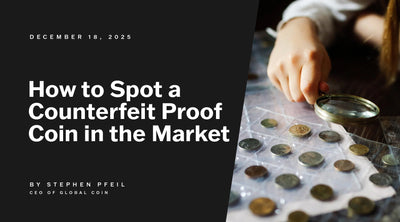
How to Spot a Counterfeit Proof Coin in the Market
How to Spot a Counterfeit Proof Coin in the Market In the world of numismatics, few things hold ...
Discover More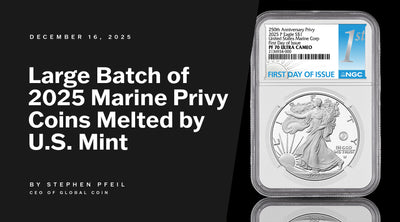
BREAKING NUMISMATIC NEWS: Large batch of 2025 Marine Privy Coins MELTED by U.S. Mint
BREAKING NUMISMATIC NEWS: Large batch of 2025 Marine Privy Coins MELTED by U.S. Mint A historic ...
Discover More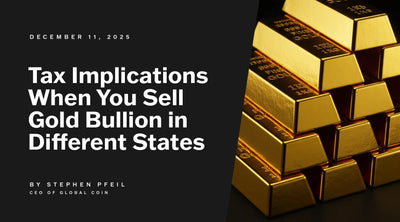
Tax Implications When You Sell Gold Bullion in Different States
Disclaimer: The following content is for informational purposes only and should not be construed ...
Discover More

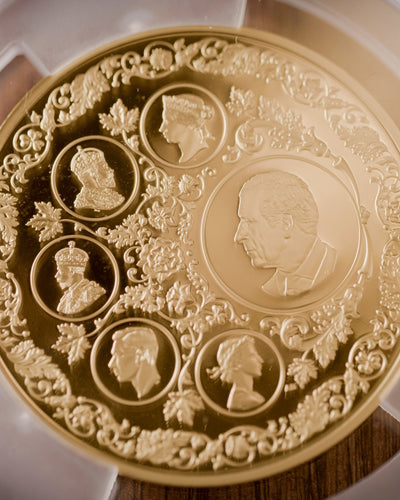
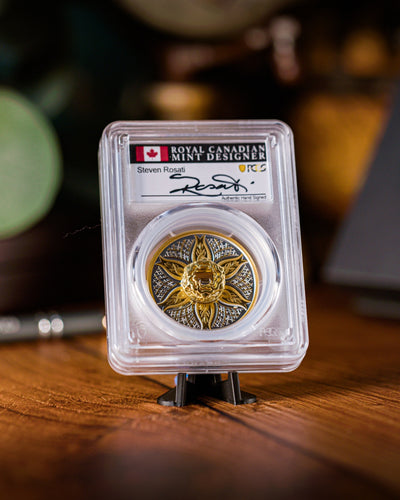
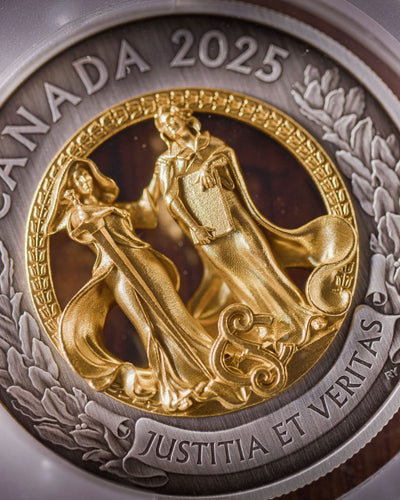

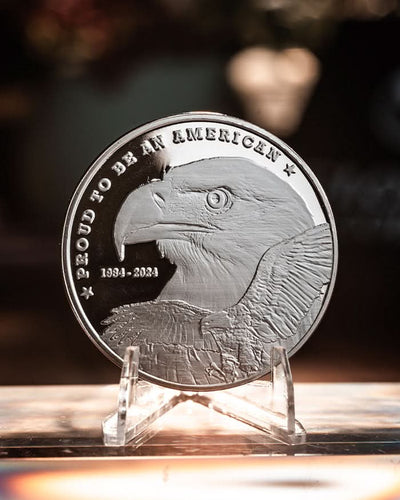
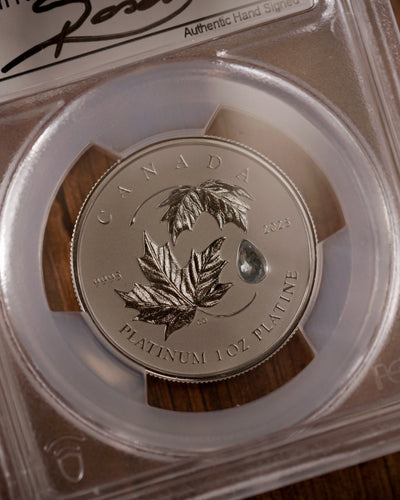
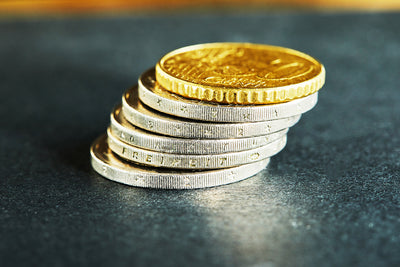
1 comment
Hello Mr Stephen Pfeil, I appreciate your Global Coin information. I would like to ask you a question that is very important to me. I would like to sell some of my Gold Buffalo coins. These coins are all 1 -ounce, graded NGC PF 70 FDOI. When I go to Sell them, will / should I receive a Premium OVER the daily gold price OR will the coin Buyer Only offer me the daily gold price value? ….. And is the Buyer trying to take advantage of me ? Please let me know the honest and true manner of what I should expect when I Sell. Thank you for your time. I look forward to your kind and timely reply. Sincerely, Ro.
Ro
Leave a comment
This site is protected by hCaptcha and the hCaptcha Privacy Policy and Terms of Service apply.